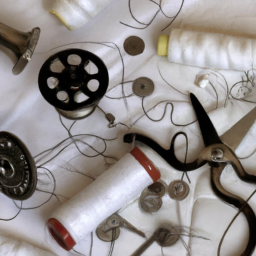
History of the Sewing Tomato

The sewing tomato, also known as a pincushion tomato, is an essential tool for every seamstress, tailor, and sewing enthusiast. This humble object has a long and interesting history, playing a significant role in the world of sewing and needlework. Let’s take a journey through time to explore the origins and evolution of the sewing tomato.
Origins
The sewing tomato can trace its roots back to the early 19th century. It was during this time that notions like pincushions began to gain popularity among the growing community of sewing enthusiasts. Originally, they were made from simple materials like fabric scraps and filled with sand, sawdust, or even crushed walnut shells.
The “Tomato” Design
The iconic tomato shape we associate with pincushions today emerged during the Victorian era. The transition from practical pincushions to decorative objects was influenced by the Victorian love for naturalistic designs and intricate details. The red fabric with tiny tomato seeds became a popular choice due to its vibrant appeal and practicality. The tomato-inspired design was also thought to be a symbol of prosperity and good luck, thereby becoming a popular gift among friends and family.
Development of Features
Over time, the sewing tomato evolved with additional features to accommodate various sewing needs. Many pincushions were adorned with a shiny emery strawberry attached to the cotton calyx. The emery strawberry, usually filled with abrasive particles, served as a sharpening tool for needles and pins. This clever addition allowed sewers to keep their tools sharp, ensuring precise and effortless stitching.
Modern Variations
In the modern era, the sewing tomato has maintained its popularity and usefulness. While traditional pincushions are still widely used, modern variations have emerged. Some feature miniature storage compartments to hold small sewing accessories like buttons or a small pair of scissors. Others incorporate convenient wristbands, allowing sewers to wear their pincushions like bracelets for easy access during projects.
Conclusion
The sewing tomato has come a long way from its humble beginnings as a functional pincushion. It has traversed through history, adapting to the changing needs and styles of sewers across generations. From a simple sand-filled pouch to a symbol of prosperity and good fortune, the sewing tomato has become an essential tool cherished by sewing enthusiasts worldwide.




